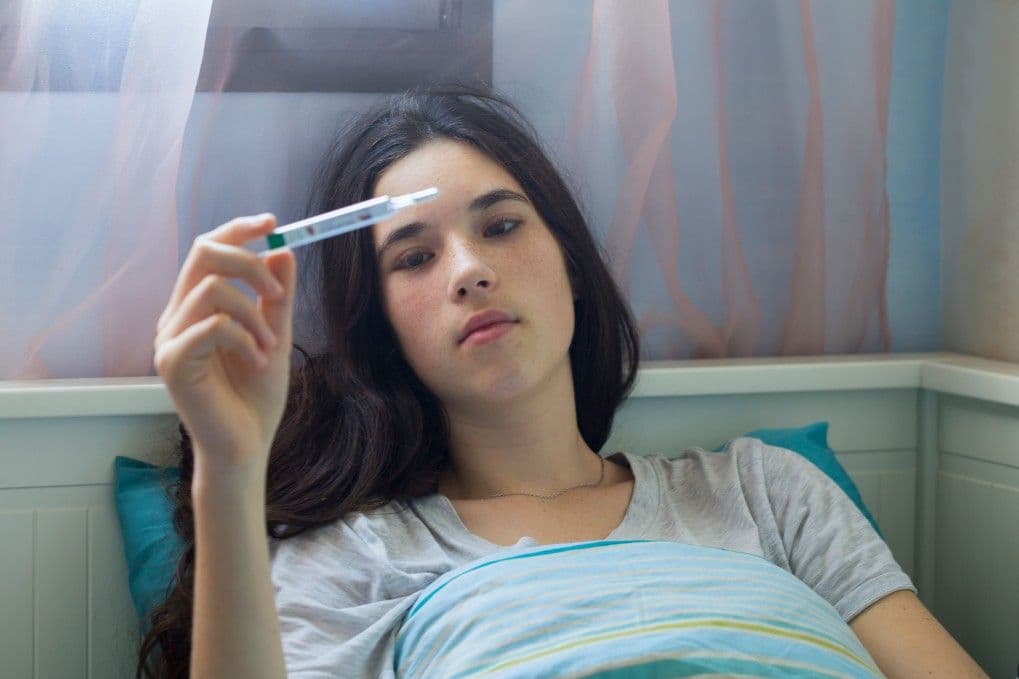Causes of Infertility in Women
Female Infertility
Obie Editorial Team

The overall single top reason for infertility is male infertility, problems with his sperms, either not enough sperms or sperms that are abnormal. That's why a sperm count or semen analysis must be done as the first step of an infertility evaluation.
There are many infertility causes for women, and testing is required to find out the reason for infertility:
Asherman's syndrome
This is a condition where the walls of the uterus adhered to each other. Usually caused by uterine inflammation.
Blocked fallopian tubes
Blocked fallopian tubes can happen as the result of pelvic inflammatory disease, endometriosis, or an ectopic pregnancy. The fallopian tubes may be abnormal in structure or function. If they are blocked, the egg cannot move from the ovary to the uterus. Causes of fallopian tube problems include previous infections (such as pelvic inflammatory disease), endometriosis, a ruptured appendix, and surgery in the pelvis. A mislocated (ectopic) pregnancy in the fallopian tubes can also cause damage. Structural disorders can block the fallopian tubes. These disorders include birth defects of the uterus and fallopian tubes, fibroids in the uterus, and bands of scar tissue between normally unconnected structures (adhesions) in the uterus or pelvis.
Cancer treatment
Chemotherapy and radiation can cause early menopause.
DES (diethylstilbestrol) exposure
Synthetic estrogen used in the 50s and 60s to prevent a miscarriage can cause abnormalities in the reproductive organs such as a shortened cervix, deformities of the vagina or cervix, T-shaped uterus, abnormal fallopian tubes, ovulation problems, increased risks of ectopic pregnancy, repeated miscarriage, and premature delivery.
Disease
Certain diseases, such as diabetes, kidney disease or high blood pressure may cause infertility. Ectopic pregnancy and some urinary tract infections may also elevate the risk of infertility.
Endometriosis
Growth of endometrial tissue outside the uterus which can cause blockage of the fallopian tubes and adhesions. It may not cause any symptoms beyond infertility but could cause crampy periods and painful intercourse.
Environmental hazards
Pesticides may damage a woman's eggs leading to early menopause. Some materials are linked to early miscarriage. Ethylene oxide, used in chemical sterilization of surgical instruments. Exposure by healthcare professionals (including veterinary) to nitrous oxide. Vinyl chloride, used in plastics, and metallic compounds including manganese, arsenic, and nickel.
Fallopian tube adhesions and scarring
Can be caused by sexually transmitted diseases which have been left untreated, Chlamydia is the most common. Scarring can lead to blockage of the fallopian tubes, or damage to the delicate membranes within the tubes. It can also be formed by endometriosis and prior surgeries in the abdominal area. Scar tissue left after abdominal surgery can cause problems in the movement of the ovaries, fallopian tubes, and uterus, resulting in infertility. Frequent abortions may also produce infertility by weakening the cervix or by leaving scar tissue that obstructs the uterus.
A woman's age is the single most important factor affecting a woman’s fertility.
Fibroids
Fibroids, or benign growths, may form in the uterus near the fallopian tubes or cervix. As a result, the sperm or fertilized egg cannot reach the uterus or implant there. Fibroids in the uterus are very common in women over age 30. Some women may produce weak, infrequent or abnormal contractions in the uterus. During ovulation, these contractions usually push the sperm up to the fallopian tubes.
Hyperprolactinemia
Elevated levels of the hormone prolactin, which can be caused by pituitary tumors, and breast milk production after giving birth. May lead to weak or skipped ovulation. Lowering prolactin levels can be achieved with Bromocriptine (Parlodel).
Hypothyroid
Hypothyroid is the under activity of the thyroid gland. Symptoms include low basal body temperature and unexplained weight gain. An off-balanced thyroid can throw off the endocrine system leading to ovulation problems and to miscarriage. Adrenal or thyroid deficiencies may cause hormonal and ovarian problems. Some women produce excess amounts of prolactin, a hormone that normally stimulates the production of breast milk. Prolactin can also prevent ovulation. High levels of prolactin in a woman who is not nursing may indicate a pituitary tumor. It can also result from the use of oral contraceptives. Women may develop antibodies or immune cells that attack the man's sperm, mistaking it for a toxic invader. Certain autoimmune diseases, in which the woman's immune cells attack normal cells in her own body, may also contribute to ovarian problems.
Implantation problems
The inability of the fertilized egg to implant in the uterus will lead to female infertility. Normally, mucus in the cervix (the lower part of the uterus that opens into the vagina) is thick and impenetrable to sperm until just before the release of an egg (ovulation). Then, just before ovulation, the mucus becomes clear and elastic (because the level of the hormone estrogen increases). As a result, sperm can move through the mucus into the uterus to the fallopian tubes, where fertilization can take place. If the mucus does not change at ovulation (usually because of an infection), pregnancy is unlikely. Pregnancy is also unlikely if the mucus contains antibodies to sperm, which kill sperm before they can reach the egg.
Immunological problems
The most common immune problems, testing positive for anti-phospholipid antibodies or the lupus anticoagulant, can lead to blood clots in the placenta that prevent nourishment from reaching a fetus. There are other more controversial causes of immunological fertility problems.
Luteal phase defect (LPD)
There are two types of luteal phase problems that fall under the category of LPD. One is a short luteal phase - 10 days or less. The second is when the length of the phase is not necessarily shorter than the standard 12-16 days, but it is out of phase and progesterone production is low. A typical treatment is to enhance ovulation and/or to use hCG or progesterone support after ovulation.
Luteinized unruptured follicle syndrome (LUFS)
Failure of the follicle to release an egg even though it has reached maturity. Commonly seen when an LH surge is not followed by ovulation. It can be confirmed with ultrasound. May account for 5-30% of women with unexplained infertility.
Maternal age
A woman's fertility begins falling off after the age of 25, though pregnancy can be achieved and maintained for most women into their early 40s. The rate of miscarriage and birth defects increases after 35. A woman's age is the single most important factor affecting a woman’s fertility. As she matures, the chance for pregnancy decreases and the odds for miscarriage increase. At 25, a woman has a 25% of becoming pregnant during unprotected sexual intercourse. This percentage begins to decrease between the ages of 32 and 34. After that, the decline is steady so that the chance for pregnancy is only 5 to 10% per menstrual cycle after a woman reaches age 40. Although older women may be more likely to experience scarring and blockages caused by endometriosis or other medical conditions, these are not significant contributors to infertility. Instead, infertility often is the result of age-related changes occurring in the reproductive hormones that stimulate egg development, trigger ovulation, and support pregnancy. Perhaps most important is the depletion of a woman’s ovarian reserve - the eggs she is born with. During her reproductive years, some eggs never mature and others are released during her menstrual cycles. Those remaining age with her and the older she is, the more likely they are to have hard shells (zona pellucida) that keep sperm from penetrating or genetic defects that prevent fertilization or cause miscarriage. When the store of healthy eggs is depleted, menopause occurs.
Medication
Non-steroidal anti-inflammatory drugs, radiation, chemotherapy for cancer treatment, antihistamine and decongestants may lead to fertility problems. Many medicines, such as hormones, antibiotics, antidepressants, and pain killers may bring on temporary infertility. Vitamin C in large doses is also considered an antihistamine - which can lead to cervical mucus drying out. Commonly used medications such as aspirin and ibuprofen can also impair fertility if taken mid-cycle. Acetaminophen (Tylenol) pills can reduce the amount of estrogen and luteinizing hormones in the body, impairing fertility.
Menopause
When a woman stops having regular ovulation and menses. Pregnancy may still be achieved through drug therapy and perhaps IVF with donor egg.
Obesity
Excess weight can lead to elevated estrogen levels which act as birth control and prevent a woman from ovulating. Drugs to induce ovulation can bypass this problem.
Pelvic inflammatory disease (PID)
Pelvic inflammatory disease (PID) is the most common cause of infertility worldwide. It's an infection of the pelvis or one or more of the reproductive organs, including the ovaries, the fallopian tubes, the cervix or the uterus. Sometimes PID spreads to the appendix or to the entire pelvic area. PID usually stems from the same bacteria that cause sexually transmitted diseases, such as gonorrhea or chlamydia. Chlamydia, in fact, causes 75 percent of fallopian tube infections. PID may also develop from bacteria that reach the reproductive organs through abortion, hysterectomy, childbirth, sexual intercourse, use of an intrauterine (IUD) contraceptive device or a ruptured appendix.
Polycystic ovary syndrome (PCOS)
This condition often leads to ovulation problems. It can be diagnosed through ultrasound to show cysts in the ovaries or through blood tests of hormone levels. PCO patients often have elevated LH (LH: FSH greater than 3:1) and excess androgens. Insulin resistance is also common. Symptoms include infertility, irregular cycles, obesity, acne, excess facial and body hair, obesity, skin tags, dark skin patches (back of the neck, under arms, under breasts, groin), cystic ovaries, excess male hormones, insulin resistance, and dyslipidemia. It should be diagnosed through a combination of a physical exam, ultrasound evaluation to look for possible cysts in the ovaries or ovarian enlargement, and blood tests to check LH and FSH (check ratio, as well as levels on these two as LH higher than FSH, is indicative of PCOS, especially when 2:1 or 3:1), testosterone, DHEAS, SHBG, androstenedione, prolactin, TSH, fasting glucose and insulin testing.
Premature ovarian failure (POF)
Characterized by high FSH in a younger woman (usually in her 30s). Cancer treatment and environmental hazards may play a role in the development of POF.
Recurrent miscarriage/pregnancy loss (RPL)
When a woman miscarries more than one pregnancy. Testing can be done to try to determine the cause of such losses. If an underlying condition is found, the woman may need to be treated for the problem before a pregnancy can be carried to term.
Smoking
Associated with an approximately 5% increase in miscarriage rate. Smoking also doubles the chances of ectopic pregnancy by damaging the cilia in the tubes. Studies have shown a marked decrease in the effectiveness of IVF and GIFT.
Tubal ligation (and failed surgery to reverse)
Surgical sterilization of a woman by obstructing or tying of the fallopian tubes. May be reversed surgically with varying degrees of success.
Turner's syndrome
Women should have cells that are 46XX, but Turner's women are missing an X -- hence a karyotype of 45XO or mosaicism of 46XX and 45XO. Turner's women with a 45XO karyotype are sterile while those with mosaicism may be able to get pregnant and carry to term. Women tend to be ultra-feminine and small in stature.
Uterine abnormalities
Include problems from DES exposure, septums, T-and heart-shaped uterus.
Vegetarian lifestyle
Vegetarians may experience irregular ovulation, reducing the chances of getting pregnant.
Read More











